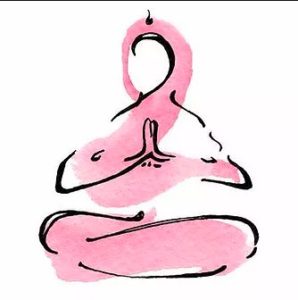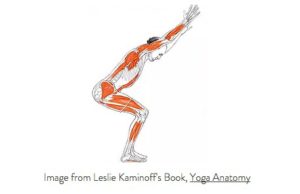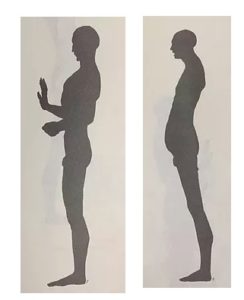By Zeyah Rogé
When I practice yoga regularly, I experience what can best be described as balance. It can be felt even after a single practice – I come to my mat unsettled, tense, or lethargic and leave feeling… well… balanced. This is probably one of the biggest responses I hear from my yoga students as well. This isn’t a coincidence. Cultivating balance is codified in the practice and captured beautifully in a commonly cited yoga aphorism that states: ‘Sthira-Sukham Āsanam’ – translated to, ‘assume a steady and easeful stance’.

Image by Lindsay Stachell Designs
This aphorism is specifically speaking to the practice of asana (yoga postures), however, I enjoy applying it to much more than that. I see cultivating a steady and easeful stance as an attitude that fosters adaptability and resiliency. To study yoga means to critically engage with these aphorisms and appreciate them subjectively. The following is a little elaboration on how I have been processing this particular teaching, in light of my background as a somatic psychotherapist.
For those of you unfamiliar, the field of somatics is made up of movement and bodywork techniques that have collectively created a body-based theory. As a somatic psychotherapist, I approach mental health with this theory in mind, always considering how the body gives rise to and is shaped by psycho-emotional process. Each psycho-emotional experience is accompanied by a physical pattern, for example our body organizes differently when we are mad versus when we are happy. We can get curious about how our body is organizing to better understand our relationship to any given situation.
A simple place to start is to look at what degree of sthira (steadiness) and sukha (ease) are present in the body. Optimally, they are present to the degree that is appropriate for the situation at hand. There are instances where we need more sthira, like when we are advocating for our needs. Other instances are best facilitated by a heavier dose of sukha, like when we are sharing intimacy with a partner.
Let’s experiment using a yoga pose as our “situation at hand.” Go ahead and hold utkatasana (chair pose) for 30 seconds. How are you supporting yourself? Where are you receptive? Chair pose benefits from the support and steadiness (sthira) of the feet and legs. The shoulders, jaw, and eyes are welcome to be soft and receptive (sukha). Does your pattern reflect this or are you expressing sthira and sukha in some other way?

Feel free to explore with something more complex. You can bring to mind a familiar relationship dynamic, for example. Take the time to really immerse yourself in the dynamic and imagine all of the details. As you do, notice your body. How are you stabilizing? How are you receptive? What tension patterns do you notice? Where are you spacious? What is your breath doing? Once you collect your body-data, ask yourself if the degree of sthira and sukha feel appropriate for the situation.
The two figures show examples of somatic expressions of rigidity and collapse from Stanley Kelemen’s book, Embodying Experience.

Sometimes these energies get out of balance and we relate to the present moment inappropriately. This is often a result of past experiences – traumas or otherwise. When sthira is exaggerated it manifests as rigidity, and can accompany controlling behaviors along with inflexible boundaries that block rather than facilitate connection. When sukha is exaggerated it manifests as collapse and can accompany lethargy, lack of presence, and diffuse boundaries, often resulting in a sense of powerlessness. While we all embody these extremes at times, getting stuck in these patterns can be problematic. They can become habituated and subconsciously enacted, giving rise to attitudes and actions that ultimately sabotage what we truly need and want.
The practice of yoga asana offers a collection of energetic and restorative postures that support somatic balance and in this way they have a re-collaborating effect. They are designed to unwind restrictive tension patterns and promote fluidity through increasing range of motion, thereby targeting rigidity tendencies, and bringing sthira back into balance. They also create integrity and productive support by increasing strength and agility, thereby targeting collapse tendencies, and bringing sukha into balance. In this way the yoga postures tune us by tightening and loosening our strings so that we can sing our best songs.
In addition to the postures working us, we can work them. I encourage my students actively to invite steadiness and ease into each pose, and offer cues to assist with this. Ultimately, however, I encourage students to explore this for themselves. Just like with the chair pose example from above, the asana practice gives students opportunities to study habitualized patterns and readjust sthira and sukha levels. This process fosters curiosity, experimentation, and empowered choice-making – all hospitable qualities that support positive, lasting change.
While on the surface asana increases physical strength, flexibility and agility, from a somatic psychology perspective, asana also increases psycho-emotional strength, flexibility and agility.
I look forward to exploring this with you on the mat!

